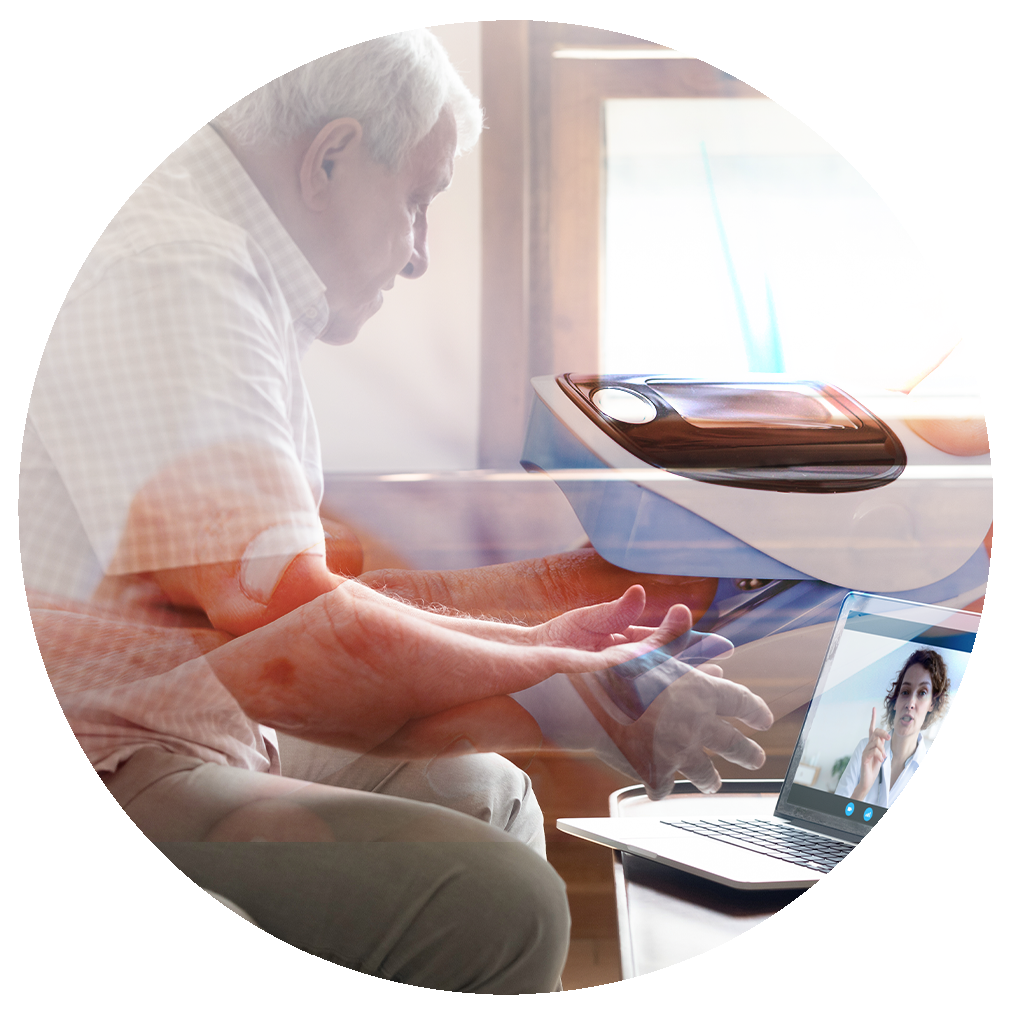How to assess a patient over the phone
Tutorial presented by Dr Avkash Jain, GP in CAVUHB and Community Director for PCIC.
During a telephone consultation, assess the likelihood of COVID-19 infection by the presence of the following symptoms:
- New dry cough
- Fever/chills
- Impaired sense of taste/smell
- Lethargy
- Breathlessness
Ascertain the severity of the patient’s symptoms, particularly whether they are showing signs of deterioration. Deterioration, particularly after 7-days increases the risk of mortality in patients with COVID-19, especially when they are in a high risk group.
During a telephone consultation watch out for common red flag features:
- Unable to finish a sentence due to breathlessness (note: evidence suggests that people may not present with breathlessness despite significant hypoxia)
- Breathing harder or faster than usual, or having to lean forward to support themselves to breathe
- They have an audible wheeze
- Significant deterioration in functional status – stopped doing usual daily activities
- Patient reports having blue lips
If the patient presents with any red flags, escalation to hospital may be necessary and this should be discussed with the patient.
Alternative options include:
- Escalation to video consultation where available, for a visual assessment of the patient.
- Attendance for a face-to-face consultation for a full clinical assessment of the patient.
- The patient is comfortable and coping well at home, there are no red flag symptoms and the patient is in the low risk category for COVID-19. Safety netting advice is provided to the patient and they remain at home.
How to assess a patient over the phone
Tutorial presented by Dr Avkash Jain, GP in CAVUHB and Community Director for PCIC.
During a telephone consultation, assess the likelihood of COVID-19 infection by the presence of the following symptoms:
- New dry cough
- Fever/chills
- Impaired sense of taste/smell
- Lethargy
- Breathlessness
Ascertain the severity of the patient’s symptoms, particularly whether they are showing signs of deterioration. Deterioration, particularly after 7-days increases the risk of mortality in patients with COVID-19, especially when they are in a high risk group.
During a telephone consultation watch out for common red flag features:
- Unable to finish a sentence due to breathlessness (note: evidence suggests that people may not present with breathlessness despite significant hypoxia)
- Breathing harder or faster than usual, or having to lean forward to support themselves to breathe
- They have an audible wheeze
- Significant deterioration in functional status – stopped doing usual daily activities
- Patient reports having blue lips
If the patient presents with any red flags, escalation to hospital may be necessary and this should be discussed with the patient.
Alternative options include:
- Escalation to video consultation where available, for a visual assessment of the patient.
- Attendance for a face-to-face consultation for a full clinical assessment of the patient.
- The patient is comfortable and coping well at home, there are no red flag symptoms and the patient is in the low risk category for COVID-19. Safety netting advice is provided to the patient and they remain at home.
Resources
All Wales Guideline for the Management of patients with confirmed or suspected COVID-19 in the Community
More like this

Top tips for assessing respiratory status remotely

Meeting the needs of people with learning disabilities during the COVID-19 pandemic


